May 2011
Castles in Spain
Or, Third Time’s the Charm
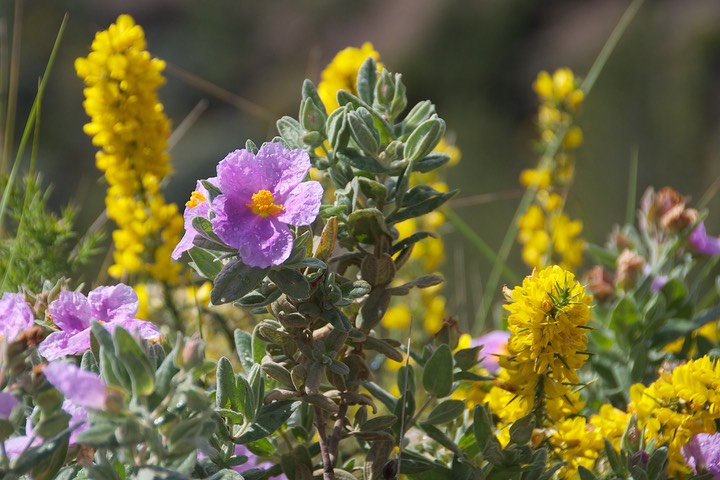
Yes, we’re back in Spain, and are loving it even more. We seem to have saved the best part of the country for last, and Spain in the spring is a lovely, green countryside filled with fields of wheat, trees in bloom, and babies in the fields nuzzling at their mommies looking for milk. It has been a surprise to us, and a real treat.
We came out of Morocco ready for a change. We had been warned of a culture shock as we returned to the European Union. But not really. Morocco was really not all that far off the mark. And we have found that Spain is a good fit as a follow-up country.
Arriving back across the Strait of Gibraltar, our first goal was to sample the wares of Iceland, an English store we’d heard about located along the Costa del Sol. Supposed to be even better than the English offerings available in Gib. Actually, it was rather terrific, and we were able to stock up on some items not available for some time. One small disappointment was that they were out of matches. Now this may seem a very small issue to you, but not to me. We use kitchen matches every day, several of them. In Morocco (as well as throughout much of the EU) all you can buy are these tiny – dinky actually – little rascals that are too short, too wimpy, and come in itty-bitty boxes. Fairly useless. But not in England. Proper matches, those. So I had high hopes – dashed as usual.
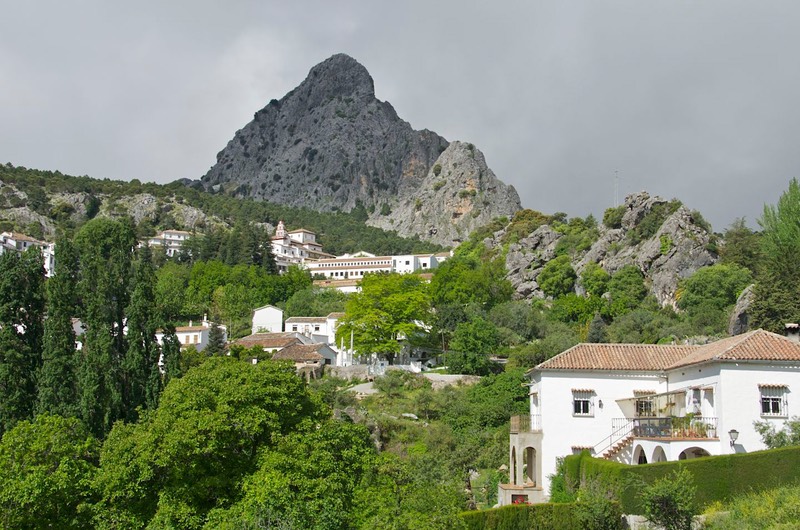
We had to drive east along the Mediterranean coast as far as Marbella to get to the Iceland store, and fight our way through coastal traffic/tiny streets/all the usual. We really did know we had rejoined “civilization.” But going to Marbella served to position us for a journey on to the White Towns of the hills just to the north, starting with Ronda, the best known.
We actually did a mere drive-by of Ronda itself; too many folks. But we drifted on to the charming community of Grazalema. The white towns are so named because of the color of the houses, quite stark on the hillsides. Grazalema was great. It was a misty evening when we arrived. The next morning we wandered the streets, enjoying a fountain that went back to Visigoth times, an ancient communal clothes washing area, lovely homes and small churches, and a terrific view as you got higher up into the town. And then, at the top of the pass (the Puerto de las Palomas) you could see forever. A great spot.
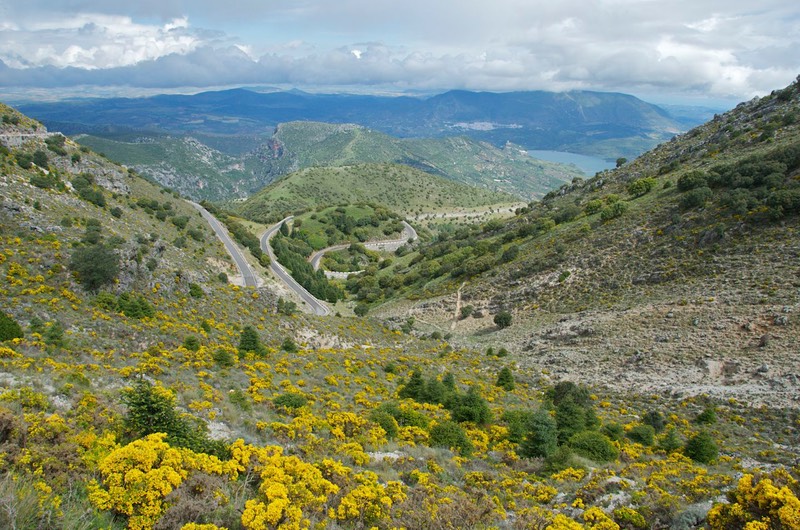
We had decided, on returning to Spain, to basically head straight north on a route that took us to the west of Madrid, ending up in the Basque country in order to visit Bilbao and the Guggenheim Museum. Then we would squiggle east and cross into the French Pyrénées.
We’ve been able to keep to this plan pretty well. We ultimately chose to skip Seville, as being too far west; and Madrid, Toledo and a few other choice spots because we hold wonderful memories of them from our very first trip together - to Spain - back in ‘92. Over the years we’ve come to believe that it is best not to go back to try to recreate terrific past experiences. Instead we’ve been able to enjoy many tiny little corners of Spain that often get missed, and some beautiful country. Spain is not all flat, darlings (“The rain in Spain…”); there are rolling hills and valleys and gorges and real mountains and even a bunch of man-made lakes. We enjoyed it all.
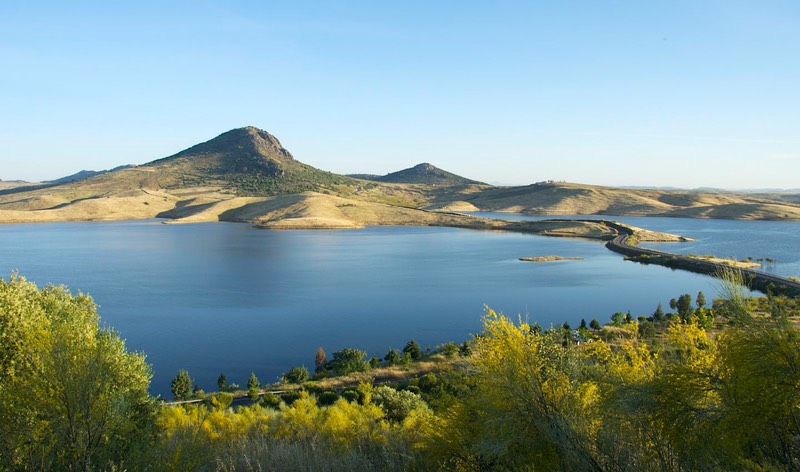
Speaking of man-made lakes (embalses), they make great camping spots. Often there is road access, a pull-off area of some sort, and complete solitude. We spent several days and nights enjoying them. One had an island in the middle; we were camped right beside it, and we climbed to the top. Quite the view! At that same spot, we did have a run-in with some sort of critter, and I got stung on the toe. In doing some research afterwards, I think my encounter was with a young centipede. It was about 3-4 inches long (that’s a compromise position; Rick says two while I’m sure it was at least six), and had a zillion segmented legs. We found it in the covers at the foot of the bed, in the middle of the night. UGH! Very unpleasant; fortunately, no aftereffects. For days we’d both jump when anything brushed against our bare legs.
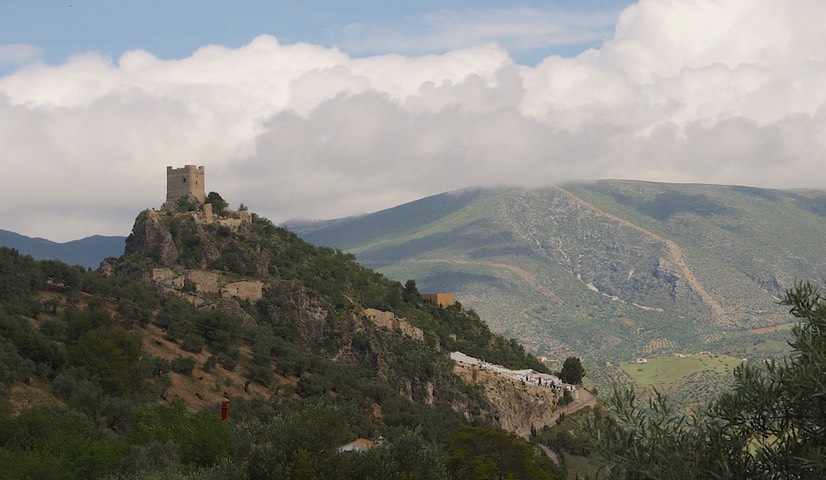
But mostly Spain is full of – castles. And we’ve seen a bunch. All cool, all different (honest!). We’ve begun calling this The Castle Tour. They come in ruins, fully restored or somewhere in between; large or small; pink or yellow or honey-colored; in the middle of town, surrounded by a fortress and walls, or all alone up on a hill; but they keep on coming. You can’t see them all. But…we did our best. Touring castles is a great way to see isolated communities, far corners of nowhere where you feel as if you are on a shuttle beamed down from the USS Enterprise (“going where no man has gone before…”).
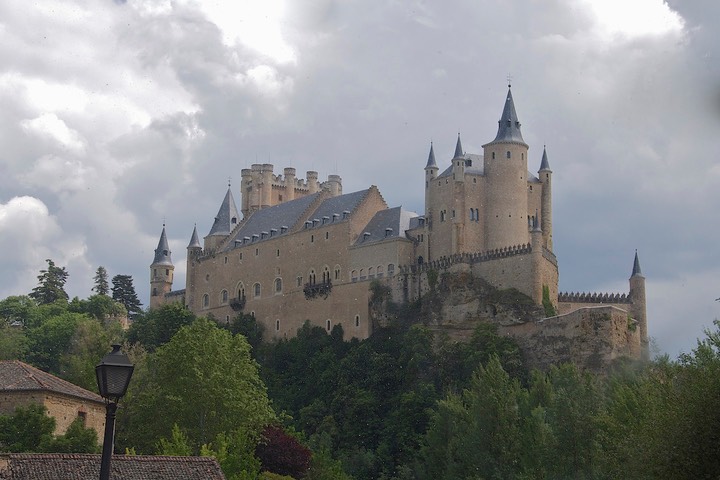
Some castles and fortresses are in the midst of a huge city. We wanted to visit Segovia, which has a wonderful cathedral, and also houses the castle Disneyland was presumably modeled after; couldn’t find a place to park anywhere, so settled for a drive-by, with me taking pictures fast and furious while Rick maneuvered through the horrendous traffic. The Fortaleza Califel, near Gormaz, was just the opposite; Gormaz hardly exists, and the fortress is high on the hill above the village. This fortress was special; now in ruins, it was quite huge and had an immense presence back a thousand years ago. It also had a fabulous view, which of course was part of the point of placing the fortress on the hill to begin with.
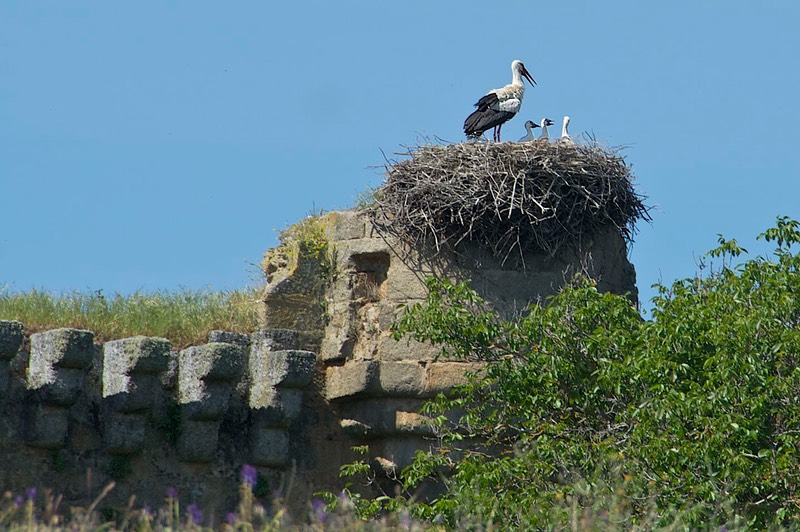
Along with the castles, not to mention all the churches of course, came the storks. We have been enjoying these lovely big birds ever since last fall in southern France. We are not birders in the least, but you can’t miss these guys. Every couple has this big nest, always located on top of some tall tower or spire. Just about anything will do, from electrical towers to minarets. By now, the babies – storklings (?); storklets (?) – are big enough to be seen peeping over the rim of the big nest, but momma is always there protecting them while dad scouts around to feed his growing brood. Interestingly, most often there are 3 babies in the nest. As we’ve mentioned before, we’re pretty easily amused and as with sheep and goats and other farm creatures, our day is just not complete without a stork sighting. Makes you wish you were here, eh?
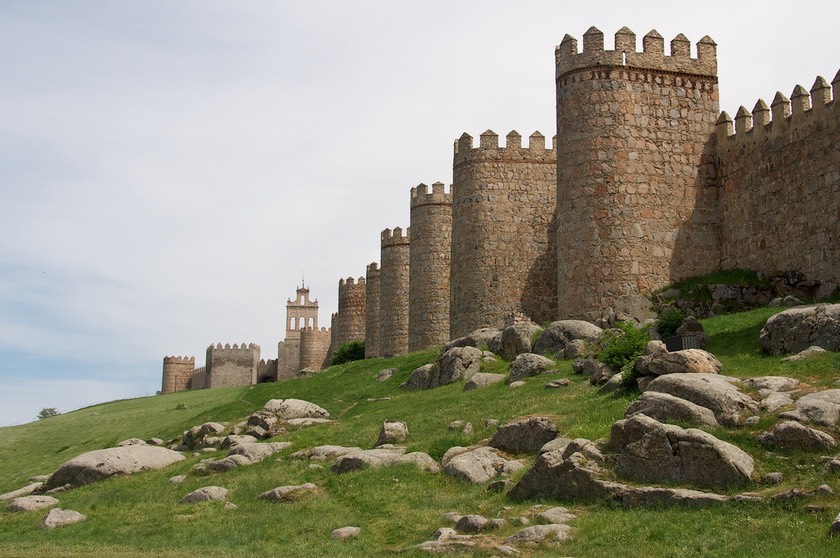
In Ávila, the medieval walls around the old city are some of the best preserved in all of Europe, and we had a perfect view. There is a great parking area close by, and we were able to spend the night there, watching as daylight gave way to the walls being lit for nighttime viewing. That night we also were serenaded by a local band warming up for a gig; we enjoyed them between about eight and ten, so the performance was later than that. (We well remember that trip in ’92 when Rick was singing with the Cuesta Master Chorale and we toured Spain performing -- generally at 10:30pm or later.) The band’s tunes weren’t all that special, but they had a couple of trumpet players that were outstanding; the rest of the band provided a simple counterpoint or continuo effect to those high wailing trumpets. It was a warm night and the high notes floated around us; all in a large municipal parking lot, just terrific.
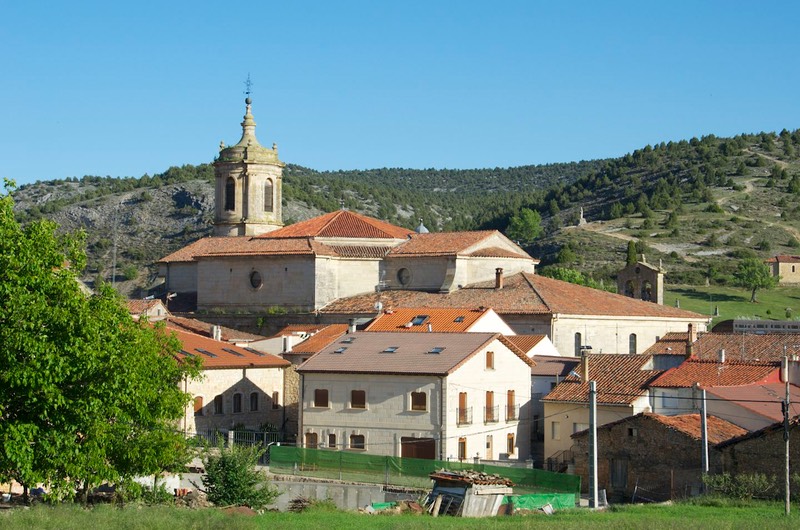
We also caught a few monasteries, by the way. Often they are in the middle of nowhere, with a small village at hand to provide for whatever is needed. Guadalupe and Santo Domingo de Silos were two that stood out. At Santo Domingo the monks allow visitors during matins and vespers, so we were able to enjoy their singing one evening.
Along with the castles came wheat country. (A parenthetical comment: we saw tons of wheat in Spain, but little if any corn in the fields. This is in direct contrast to all of Latin America, where corn is the basis for all life.)
In May, the wheat is up but still green; such a beautiful shade; the combination of trees, wheat, and vineyards was just dynamite. The bare dirt was often a dark orange, adding to the color scheme. Most towns had either a castle or a grain elevator – some had both. Much further north now, we stopped in Burgos to see the huge cathedral, an excellent example of late Gothic.
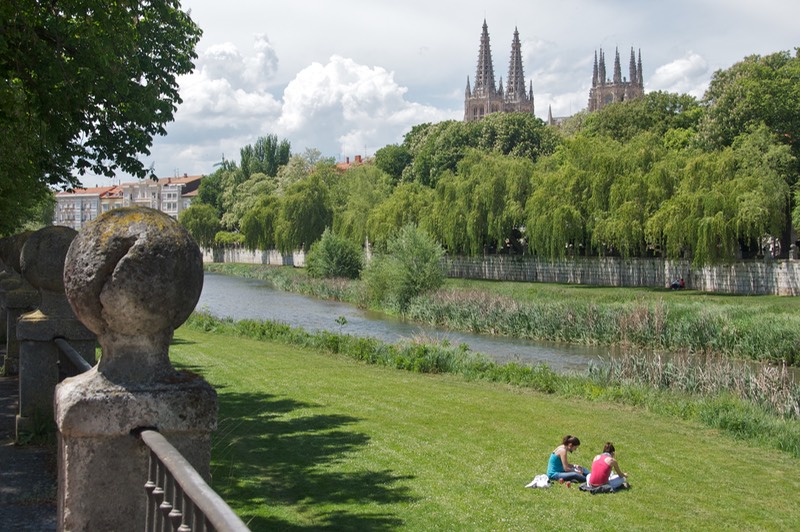
We liked the city a lot, and really enjoyed the park-like setting of the old town, but ultimately have decided that late Gothic churches aren’t our thing. While there we’d hoped to have a couple of minor items taken care of at the Chevrolet dealer; but unlike in Chile, where they’d been so anxious to help us solve problems and do anything they could for us, these folks just sort of shrugged and said they didn’t have the right computer. We’ll try elsewhere; our concerns are not that significant this time.
But Burgos was a success; upon occasion we really do want to visit a big city, and we had a good time. There were children bouncing around a park using up excess energy after (finally!) being released from a museum visit, a lovely tree-lined promenade along the river, and every cathedral is stunning when seen through the trees from across the river with its spires reaching for the sky. And…most importantly, this is El Cid Country. There was an absolutely terrific statue of that great 11th century warrior along one of the major boulevards. Be sure to check out the pictures we took of him – don’t mss the flowing beard and flashy cape!
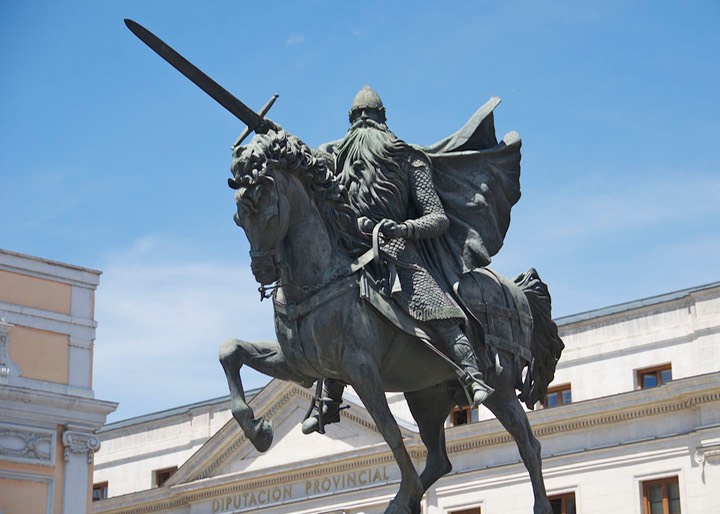
Spain has managed to set aside a fair amount of land for parks and natural areas. They are often in isolated, rugged places, and a treat to visit. Just driving through is a pleasure; we’ve spent several nights just tucked away from the road, including a lovely night by a stream in the mountains south of the northern coast. We enjoyed the Río Ebro crashing through the gorge beside us, and late in the evening we were visited by a fox, looking for a treat.
By now we were in Basque country, Euskal Herria. The changes were quite striking, and all of them terrific. The houses were stone or stucco with rock decorations; roof lines were peaked like Swiss chalets, with shutters and balconies painted the traditional red and green; pots of red geraniums were everywhere.
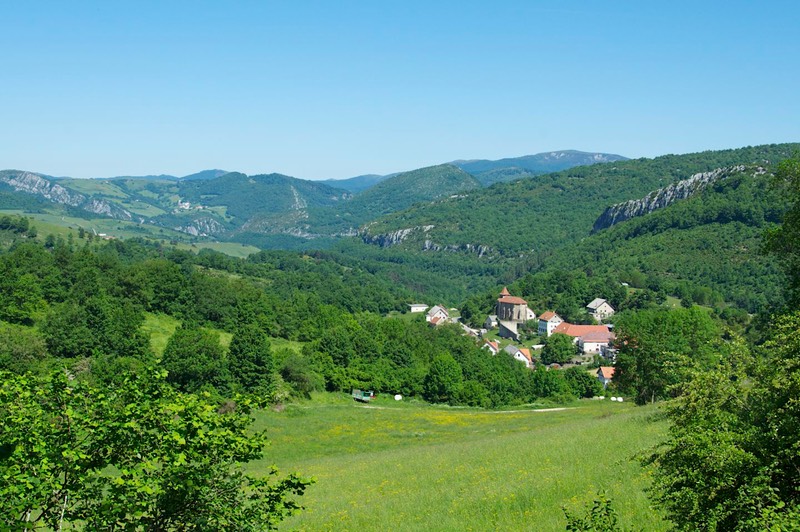
The towns all had two versions of their names and the signage was all doubled up; the Basque language, Euskara, is full of X, Z, TU, and more vowels than you can shake a stick at. The language is ancient, unconnected to Latin, Greek, or Arabic and impossible to figure out; but the Basques are universally charming and lovely to meet. And very patient with visitors.
This part of Spain is mountainous, filled with tiny villages, rainier (although we had terrific weather) than the rest of Spain, and – except for the northern coastline, which is filled with resorts – quiet and unspoiled. It is a green country, filled with wildflowers, streams and forests. Quite charming. Oh, and I forgot to mention the beautiful livestock, including some of the most remarkable cows on the planet. We spent one night parked at a forest trailhead, with cows nearby. They wear cowbells, most of them at least, and there was a constant tinkling in the air. It was lovely, it went on all evening, and I found myself trying to remember how to spell “tintinnabulation” (as in “…from the bells, bells, bells…” in E.A. Poe’s poem “The Bells”).
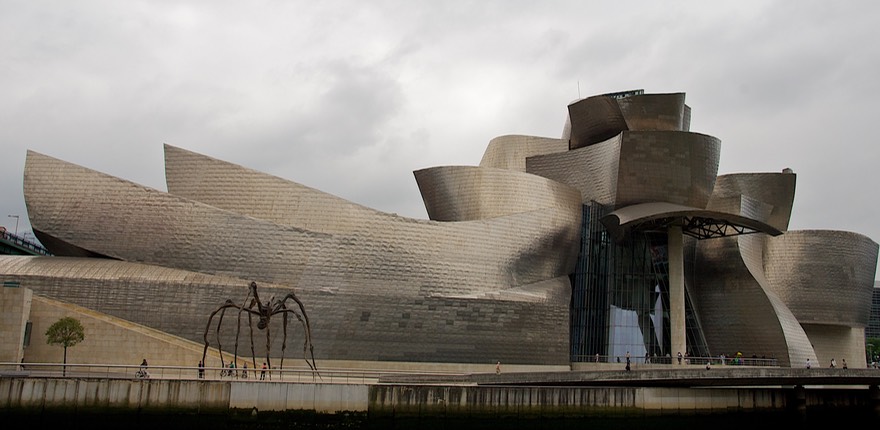
We headed for Bilbao, specifically to see the famous Guggenheim Museum. We had briefly discussed visiting the museum but the collection didn’t particularly interest us and the prices were high. We were there to see the building – and it’s a doozy. We spent over an hour just walking around the outside, both up close and from bridges and walkways on the other side of the river, taking more than 100 pictures between us (you’ll have to settle for a mere eight that we’ve posted on the photo page – which is either a relief or a disappointment, depending upon your point of view). I thought it was the coolest thing on earth; Rick substituted “ugly” but fully agreed that it was marvelous to photograph. It is made of titanium, shimmers in the light, and is incredibly alive. You absolutely must go see it!
Our minds totally boggled, we wandered further north, up to the Bay of Biscay because, once again, Kathy wanted to see some coastline. Fortunately, unlike Morocco, the roads were in good shape. Unfortunately, there were about twelve million more people here, all wanting to work on their tans (or their surfing skills – this is a terrific surfing area). We spent a very nice night in the small resort town of Bakio. It was by accident, but we had been lucky enough to pick a quiet, charming town right on a lovely beach. The next day we walked along the water before starting along the coast road, working our way towards the French border.
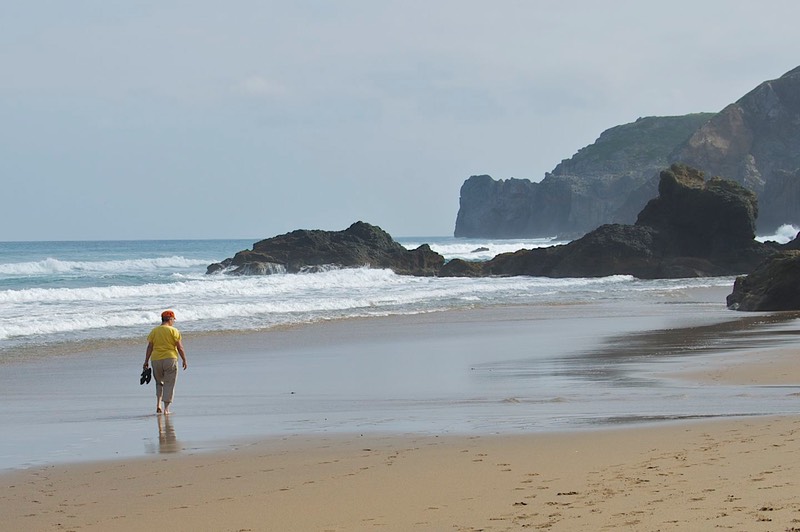
Very quickly we discovered we were not alone. It was Saturday, beautiful, and the entire coastline was jammed full of folks. We tried to go it for a bit, but said nuts to this and headed further inland. We tried to stop in Gernika (Guernica), site of the horrible saturation bombing by Franco during the Spanish Civil War and commemorated by Picasso in his incredible painting; but we couldn’t find a single damn place to park. To hell with them, we muttered, and headed for the Spanish Pyrénées. Moral: coastlines are meant to be visited during a rainy November morning, a Tuesday; not on a lovely weekend in May.
The Spanish Pyrénées are totally cool. We dug out our trusty set of European Motorad maps, which we’d won at a motorcycle rally in the States a few years back. We have maps of various mountainous areas all over Europe, showing the best (that means small, curvy, and generally lovely) motorcycling roads. We had used one such map in the eastern French Pyrénées last fall, and enjoyed the experience very much. So back into the mountains we went, this time on the Spanish side, at the other end of the chain.
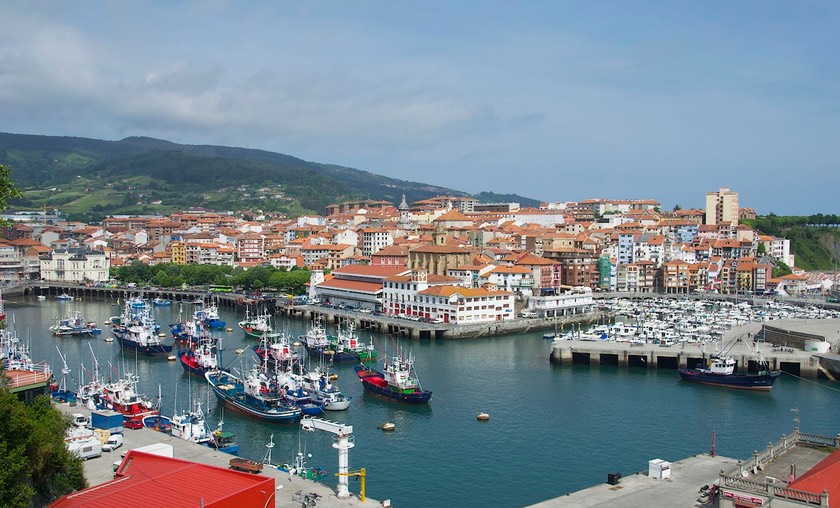
What a terrific time we had. We wandered tiny roads through tiny hamlets and farming communities, stepping aside at one point for some cycling racers to come by, listening to cuckoo birds and donkeys at night, and dodging walkers out enjoying the mountain air and pretty vistas. This is still Basque country, and we’ve decided the Basques really have it all figured out. They’ve been here long enough to know what they want and need, and not to stretch further. They have plenty of parks, and walks in the hills, and benches for sitting and looking at the view, and…well it’s just pretty special. Call it lifestyles of the wise and virtuous or something, but it sure looks good. One caveat, of course: we do know that unemployment is high in these areas, and that the young people have difficulties finding work, but the towns are beautiful and clean and attractive and its a great spot for later in life that’s for sure!
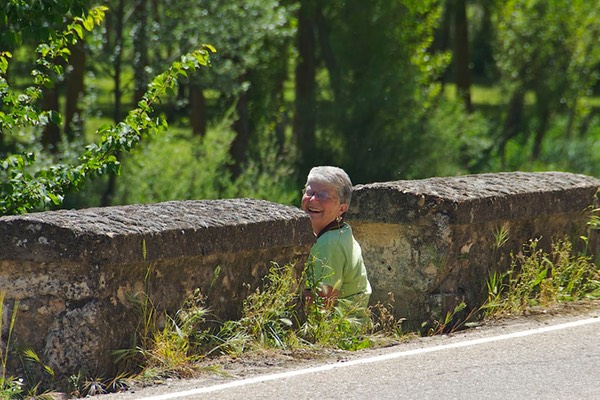
We made our way further and further north into the mountains, along ever smaller roads and over large passes; and then, suddenly, we crossed the border into France. What a great visit to Spain, and we’ve decided the Basque country is the best of it all. Come see for yourself!
Lest you worry, shortly before we left Spain, Rick found me some real matches. Contentment reigns all around. Off we go to new adventures: southern France, northern Italy, and then into the Balkans.
Tally Ho!
Click to see more photos from Spain